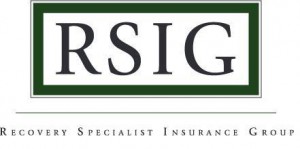 Seems these days there is a day or a month in honor or recognition of anything and everything, but this month there is an important one that all in the repossession industry need to pay attention to and that is National Distracted Driver Month.
Seems these days there is a day or a month in honor or recognition of anything and everything, but this month there is an important one that all in the repossession industry need to pay attention to and that is National Distracted Driver Month.
That’s right, April is National Distracted Driver month and Recovery Specialist Insurance Group and Lighthouse Insurance Services are taking a stand and are offering RSIG Members Commercial Driver training. Jim Clark is a certified instructor for the Commercial Driver course  through the National Safety Council and he’s traveling to different areas offering driver training to help reduce auto related claims which are on the rise. Most recently in Texas and through 4 courses, many drivers received this important training. If even 1 accident can be prevented through the information learned here, it is well worth it.
through the National Safety Council and he’s traveling to different areas offering driver training to help reduce auto related claims which are on the rise. Most recently in Texas and through 4 courses, many drivers received this important training. If even 1 accident can be prevented through the information learned here, it is well worth it.
Commercial Auto is where the majority of large, costly claims are occurring and it is this section of business that has insurers running for the hills and leaving the market. The repossession industry is certainly feeling the pinch and the towing industry has also been hit hard not only by the underpricing of the policies, but also by the increase in the frequency and cost of losses.
The number one cause of losses – Distracted Driving. Drivers are tired, talking or texting on the phone, eating, looking at laptops and listening for the Ding of a camera hit. Any one of these things is distracting enough, but the average repossessor is almost always doing one or more of these at the same time. If it’s you, you are being a distracted driver; and you’re causing losses. You’re damaging the vehicle you’re in and in many scenarios, you’re damaging another vehicle (or property) and causing bodily injury to others.
The following are statements taken from two different actual accident reports involving two different repossession companies:
“The driver of vehicle 1 stated he was tired and fell asleep. However Trooper J located fast food spilled in the vehicle, along with sauces spilled onto the dash of the vehicle. There were also uneaten fries in the cup holder and a spilled milk shake in the passenger floor board. Due to the driver’s inattentiveness, he did not notice the slowing traffic. Vehicle one made contact with vehicle two.”
 From another, separate incident report:
From another, separate incident report:
“D1 (Driver 1) stated he remembered looking at the intersection and seeing a solid green traffic light facing his direction. He stated he looked at his work computer and saw that it had fallen asleep. He stated that he looked down at the laptop and moved his finger across the finger pad to “wake it up”, D1 stated when he looked up at the intersection it was already at the time of the collision”.
Combined, these two claims cost 2 different carriers over $825,000.00 in losses to the insureds and the 3rd parties  that were injured in these claims to date with one bodily injury claim still open. (Of additional interest here, in the 2nd statement, the tow truck had cameras that provided video of the entire incident and D1’s (Driver 1’s) statement of seeing a solid green light is contradicted by the video inside and outside the truck which showed a solid red light.)
that were injured in these claims to date with one bodily injury claim still open. (Of additional interest here, in the 2nd statement, the tow truck had cameras that provided video of the entire incident and D1’s (Driver 1’s) statement of seeing a solid green light is contradicted by the video inside and outside the truck which showed a solid red light.)
What’s fueling this distracted driver trend? Increased competition for the same vehicles, especially when assigned to multiple companies and companies being paid on contingency and then as a result drivers are being paid on contingency. A “No Metal – No Money” view point discourages risk avoidance and puts pressure on an individual to produce results for fear of not being compensated for their efforts. This means drivers stay on the road more, attempt to use more technology to assist them in locating vehicles and are more likely to try to multi-task while in the vehicle or to push on when they need to rest or to stop for meals. AND…
Increased demand by lenders and clients for repossessors to have laptops in the trucks, cameras on vehicles and apps on drivers’ phones as a requirement (or at minimum strongly recommended) in order to receive assignments. Each of these serve as a distraction to drivers and it is only a matter of time before lenders, forwarders and 3rd party compliance companies that attempt to monitor repossessors are also brought into claims or lawsuits in today’s litigious society. This may happen by the claimant or injured party’s attorney who feels there are deeper pockets calling the shots… or perhaps even the repossessor may bring them in for requiring them to have these distractions in the vehicle.
As a company you need a comprehensive training plan and policy about distracted driving. Employees need to know that distracted driving is a serious problem and that it can cost a business owner their insurance.
For more information about Recovery Specialist Insurance Group, visit our website at www.rsig.com, where you’ll also find information about our repossession agent certification course and online university (www.rsiguniversity.com) and information about our upcoming annual seminar! Get registered to attend today!












Facebook Comments